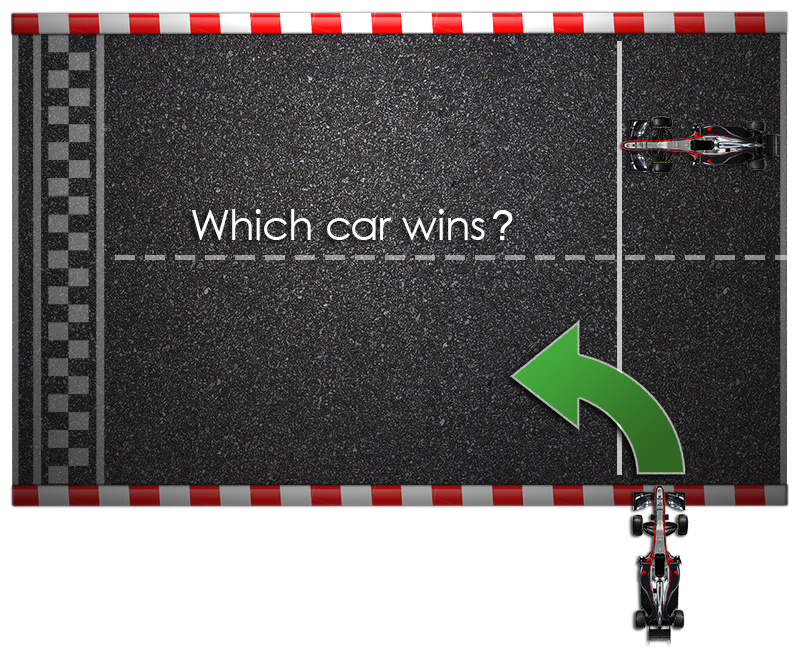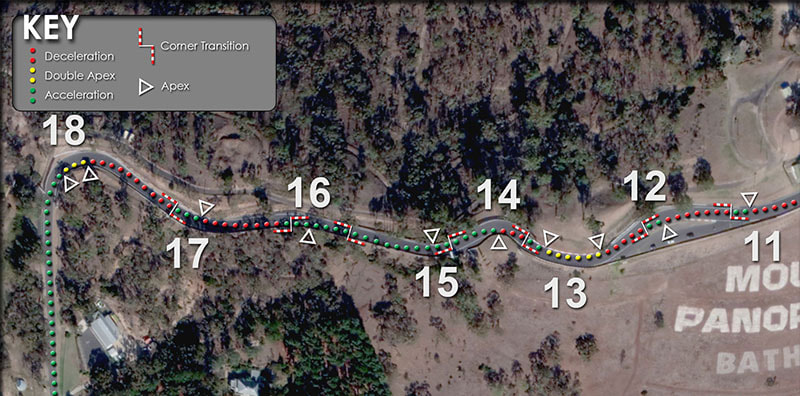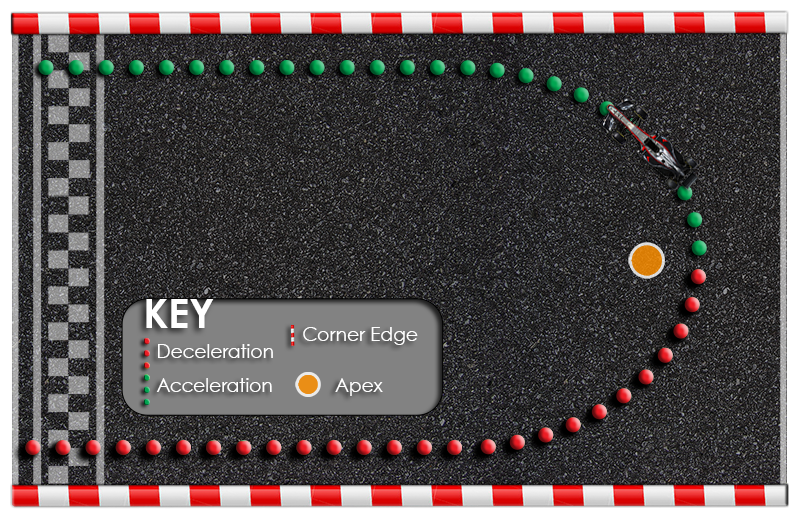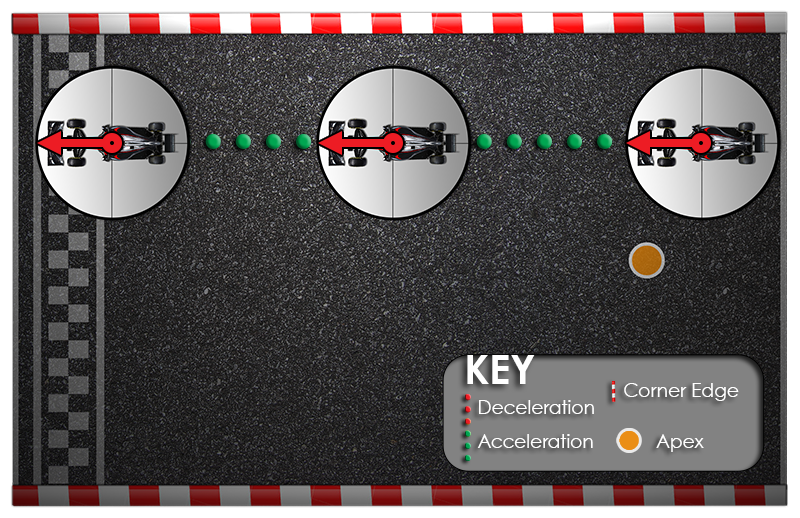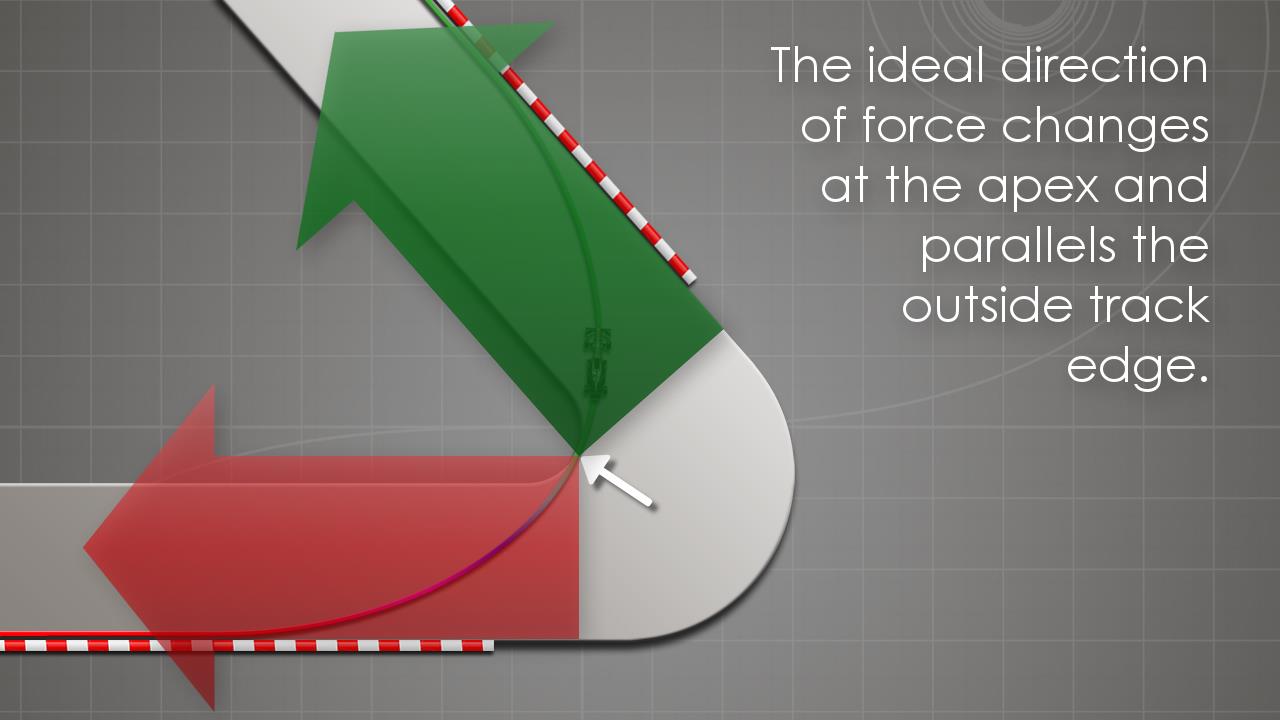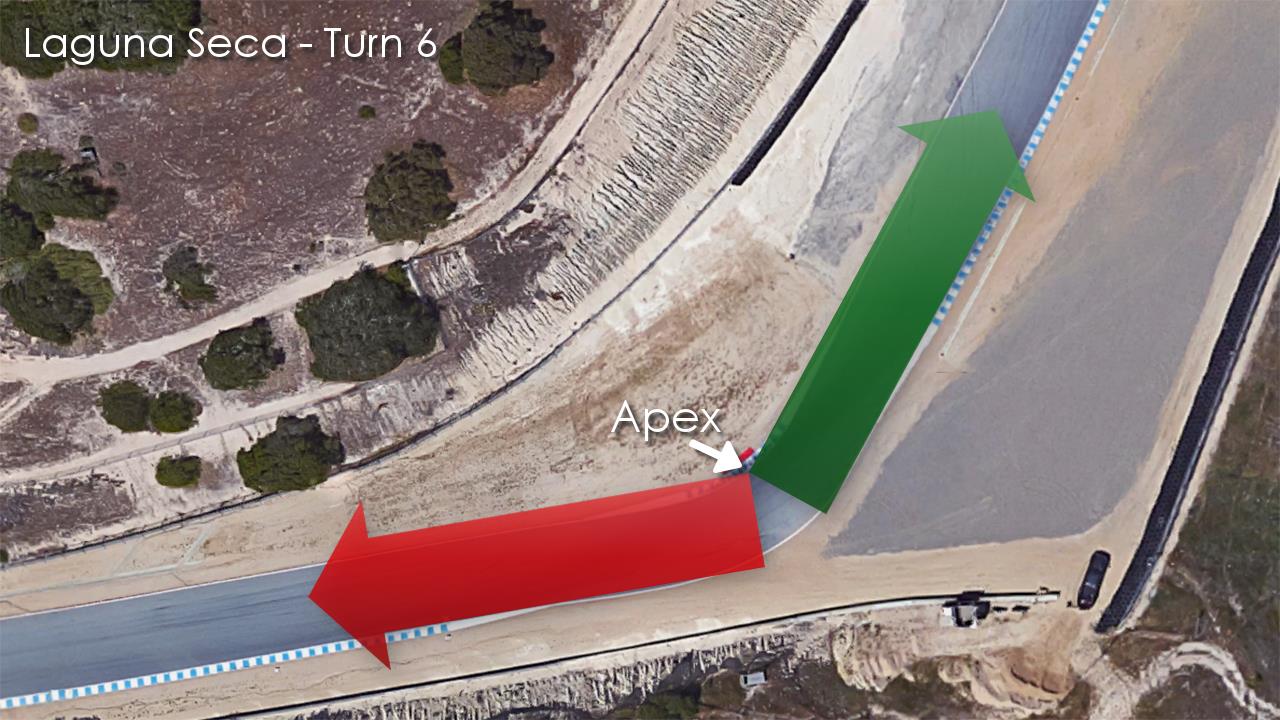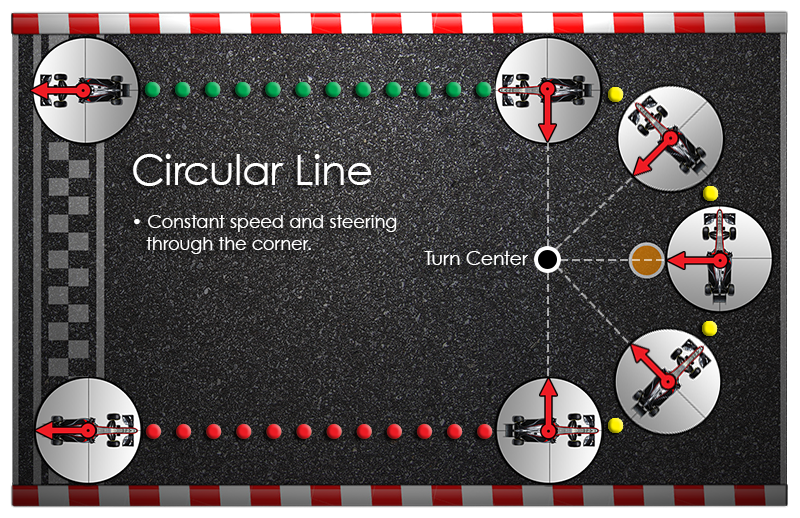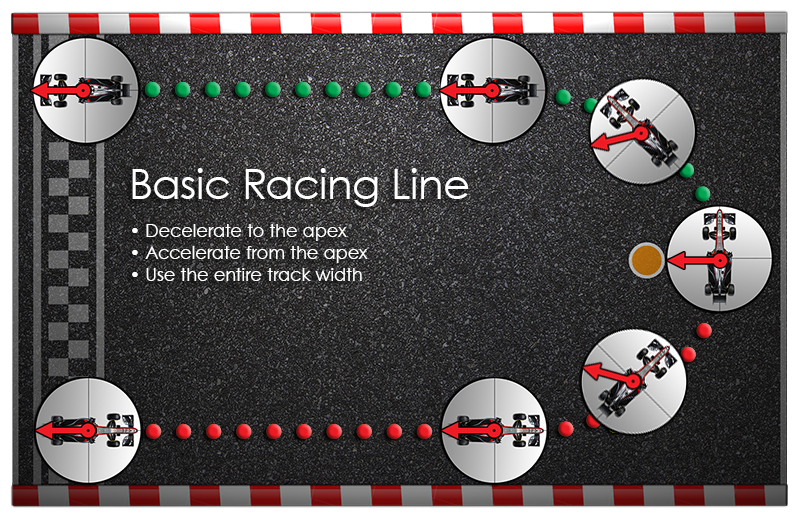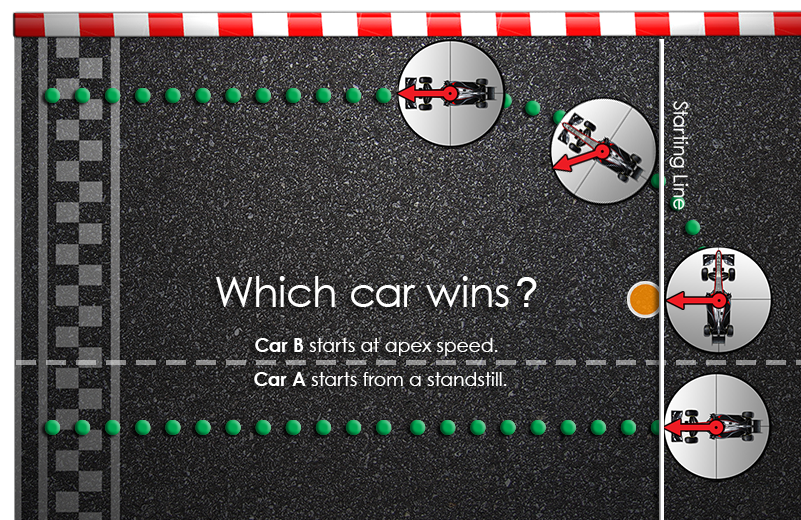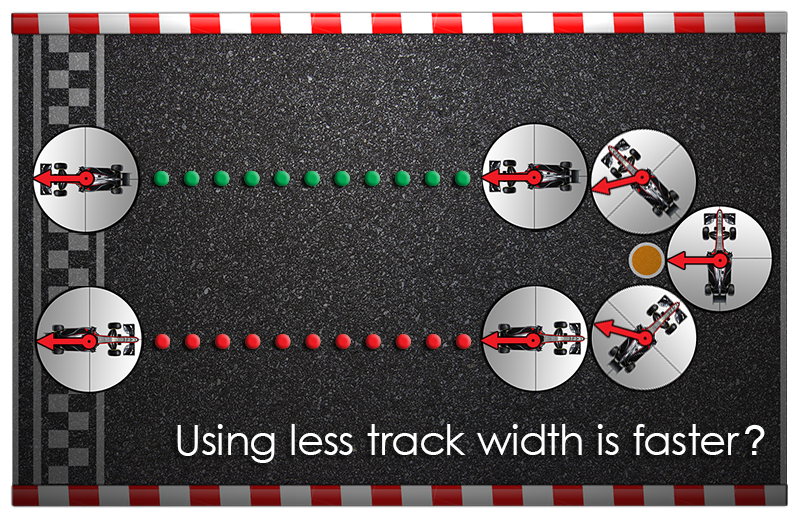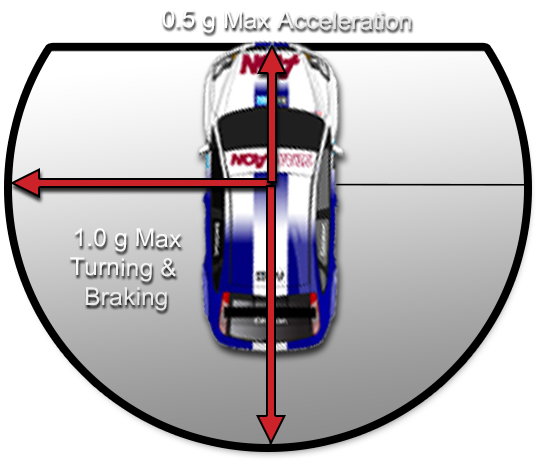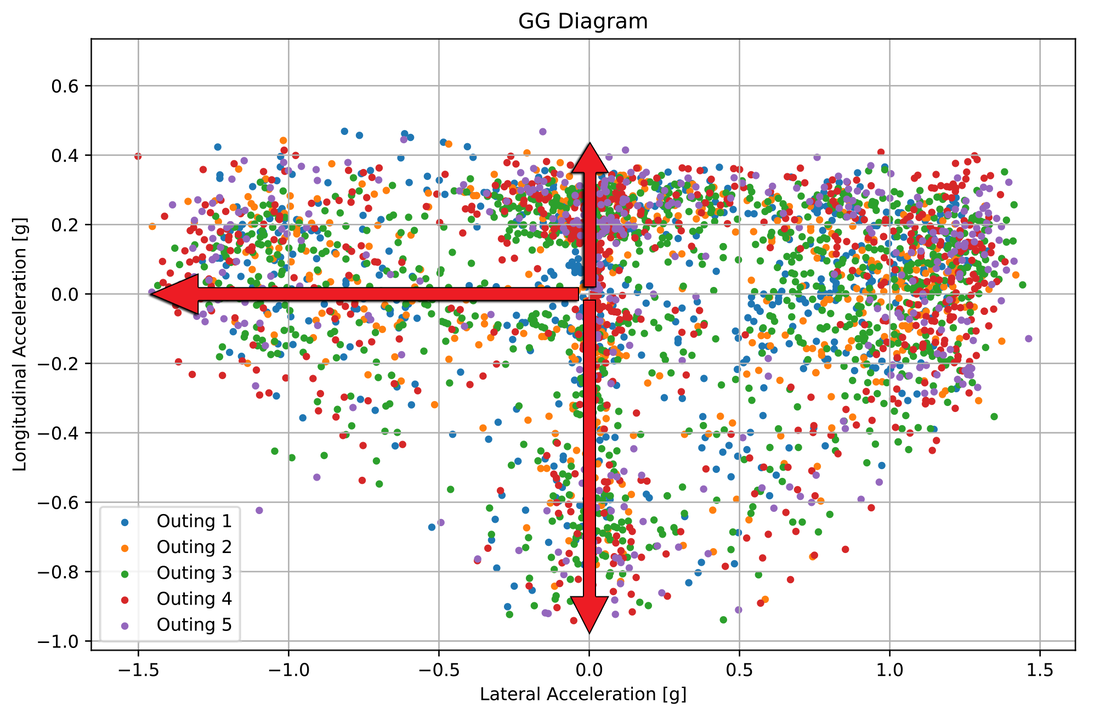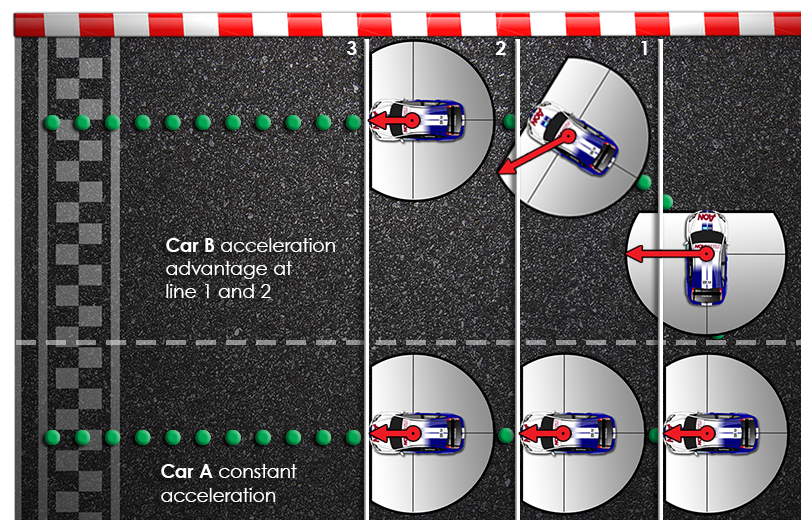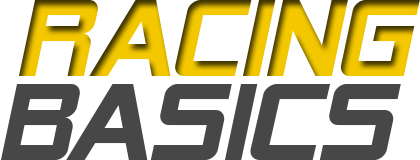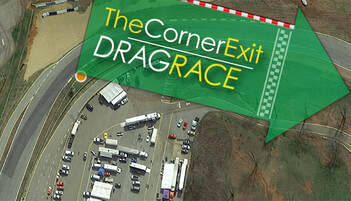
Rethinking the Big Picture
The Track
Standard corners are not always very standard though, sometimes finding apexes and corner edges can be very challenging. When I’m breaking down a track for a new Track Notes, it is a large complex puzzle with many pieces. Sometimes, the edges of a corner are not actual physical track edges, and the driver will need to instead visualize where they are. Even then, apexes and corner edge placements and angles are not static and will change depending on a car’s capabilities. On top of that, tracks often have sections where we need to connect these components into long unbroken strings that must all be optimized together. Check out the downhill section of Mount Panorama.
The Car
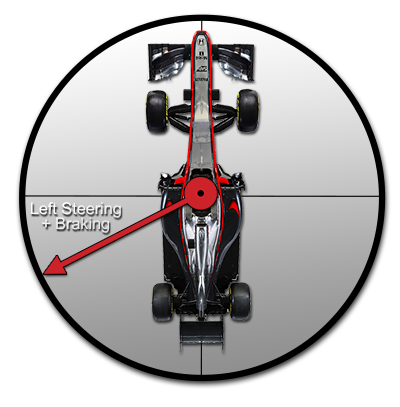
The Object of the Game
To help you along in this challenge, let’s break it down into its individual components. That way we can make sure we understand each part separately and that should help us with our final solution once we put it all back together. There are three components to this challenge. Corner entry, which is getting from the start line to the apex. Corner exit, which is getting from the apex to the finish. Then our last component is that we will have to turn the car around at the apex.
A Basic Drag Race
A braking Challenge
A Corner
The Basic Racing Line
The Corner Exit Drag Race
A Real Traction "Circle"
Back To The Races
by Adam Brouillard

